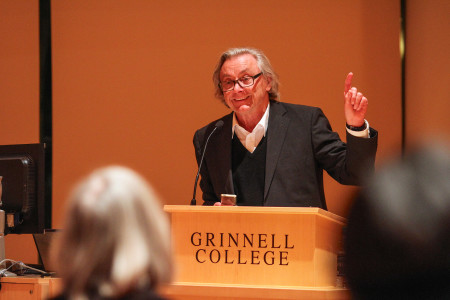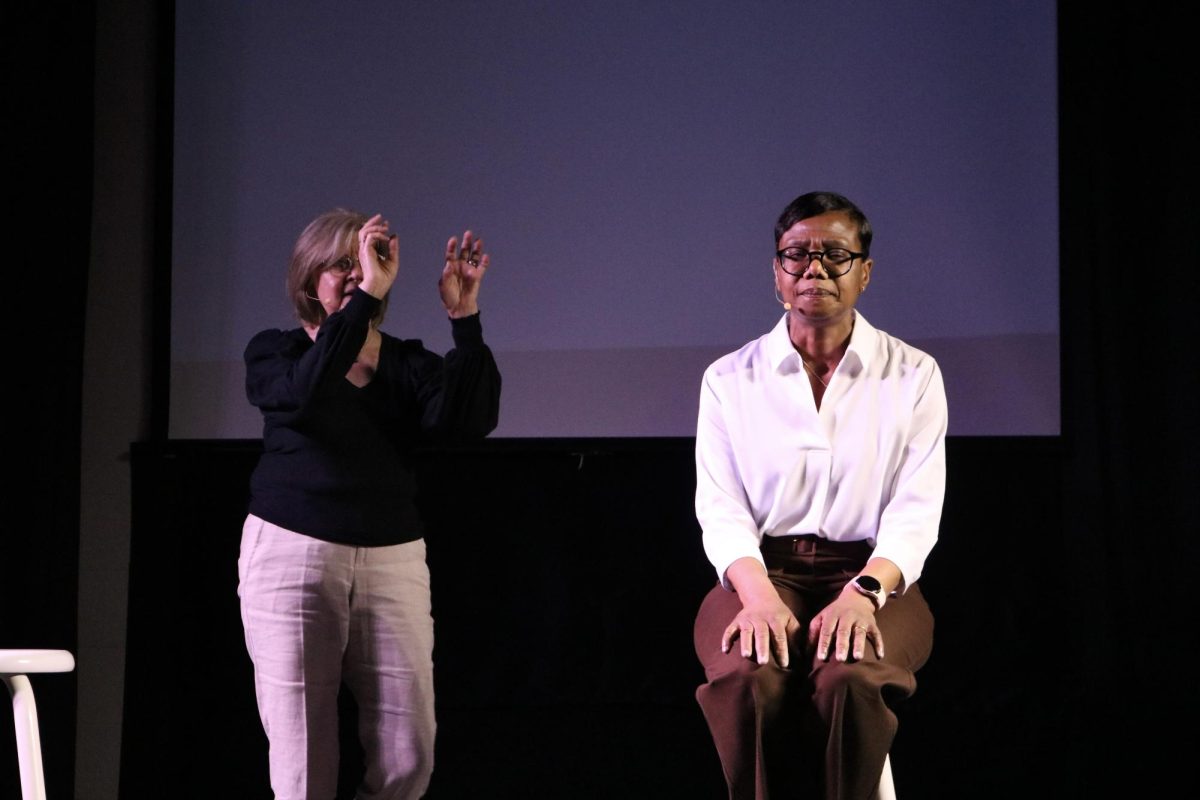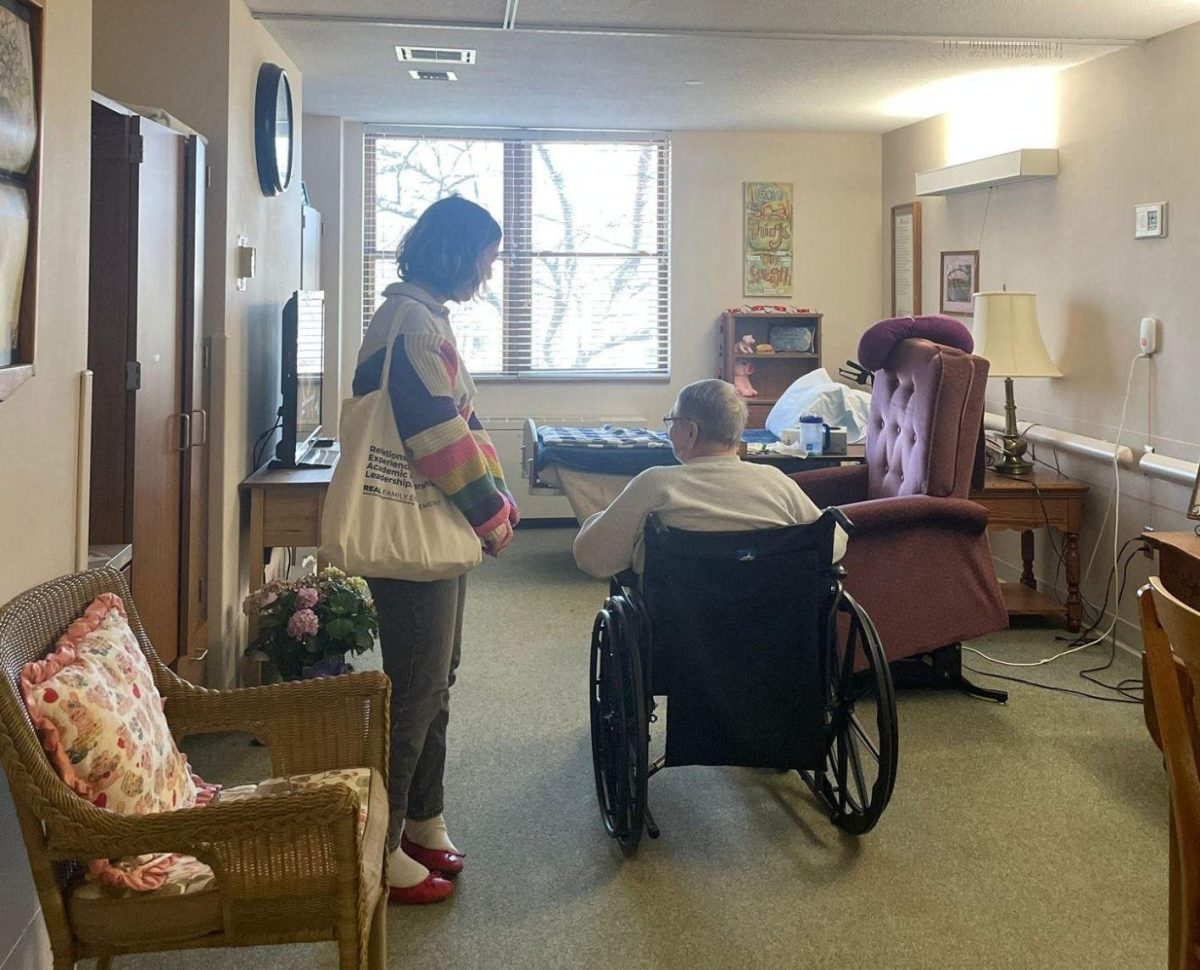On Wednesday evening, Anton Kaes, Professor of German and Film and Media at the University of California at Berkeley, gave a talk entitled, “The Trauma of War in Weimar Cinema,” in which he used Robert Wiene’s 1919 silent film “The Cabinet of Dr. Caligari” as an example of what he calls “shell shock cinema.”

Photo by Aaron Juarez.
Previewing the talk on Tuesday, Professor Shuchi Kapila, English, and Director of the Center for the Humanities, said that the Center invited Kaes because his work is relevant to the Center’s yearlong program commemorating the beginning of World War I, which is called, “A Century of War: 1914 and Beyond.”
“We’ve invited him from Berkeley so he can talk to us about this particular kind of film that emerged in Germany, and that was responding to the First World War. He also writes about trauma, [and] he writes about memory. All of these things are related [to] our exploration of the impact of war on culture generally. This is a particular moment that he specializes in,” Kapila said.
The presentation by Kaes followed a week of free movie showings at the Strand sponsored by the Center. The series last week, where prominent examples of shell shock cinema were shown, included “The Cabinet of Dr. Caligari,” “All Quiet on the Western Front” (1930) and “Nosferatu” (1922).
According to Kaes’ book on the subject, “Shell Shock Cinema: Weimar Culture and the Wounds of War,” films in this mold, such as “The Cabinet of Dr. Caligari,” give form and expression to the unresolved trauma in the Weimar Republic after World War I. Kaes declined to be interviewed for this article.
“Forced to find a language for extreme psychological states, shell shock films developed aesthetic strategies that pushed the limits of visual representation. In their fragmented story lines and distorted perspectives, their abrupt editing and harsh lighting effects, they mimic shock and violence on the formal level,” Kaes writes in his introduction to the book.
This repressed trauma finds its collective expression in film, explained Professor Daniel Reynolds, German, attributing the conception of cinema as memory to critical theorist Siegfried Kracauer.
“Because of that collective production and collective consumption of cinema, the fact that it operates on this collective level suggests that it taps into the collective psyche,” Reynolds said.
However, newer theory has provided a twist on the collective aspect on cinema consumption: the movie theater as a shared space.
“There’s something about being in a darkened room with others that is an important part of [cinema]. Its how you experience the image through your body in a collective setting that is very much a part of that experience, even if it’s affecting you on a subconscious level,” Reynolds said.

















































